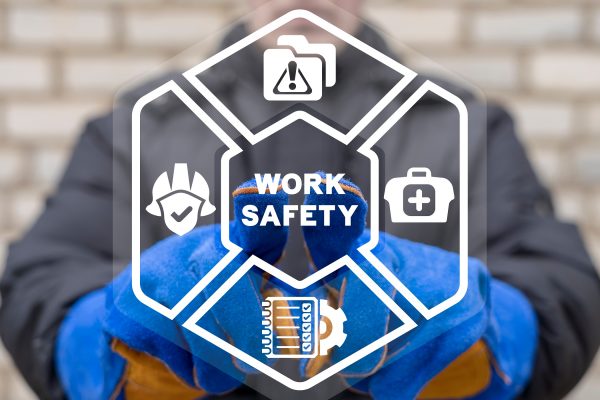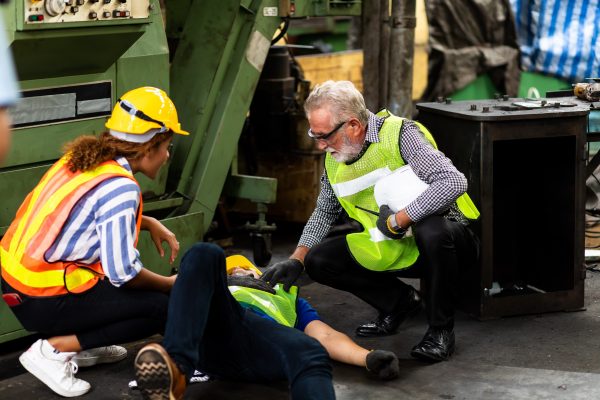HSE inspectors commonly come across companies that are engaged in routine continual monitoring or logging of workers’ hand-arm vibration exposure (eg using log books, in-line electrical or pneumatic timers or more sophisticated electronic timers and wearable timers).
The following Q&A for employers addresses why HSE advises that such monitoring is unlikely to be necessary.
1) Must I continually monitor workers’ exposure to vibration?
No. There is no legal requirement for continual monitoring and recording of vibration exposure. To do so is probably not a good use of your or your employees’ time, unless there are very specific circumstances (see below).
What you must do is decide what workers’ exposure is likely to be, as part of a vibration risk assessment. So a period of monitoring to understand how long workers use particular tools in a typical day or week may be necessary – if it helps you to do your risk assessment. Once you know enough about the work to say what the exposure is likely to be (and whether it is likely to exceed either the Exposure Action or Exposure Limit Value) your focus can shift to investigating, and taking, practical steps to reduce the exposure and the risks.
2) So I’ve stopped continual monitoring. Now what?
It’s likely that you can put your monitoring data to some use. It may give you enough information to decide what individuals or groups of workers are at risk from vibration, either routinely or on an intermittent basis. Please refer to webpage www.hse.gov.uk/vibration for guidance. Take positive action to reduce the exposure and the risks – eg change the work process to avoid the need to use hand tools, modify the work to improve ergonomics, change to better tools with lower vibration and good ergonomic design, maintain and look after the tools and consumables and train your workers. Make sure the action you take results in real changes – monitor your systems and make sure work instructions are being followed. Don’t forget health surveillance for workers at risk, to pick up early signs of ill-health.
3) I’m using monitoring to make sure my workers keep below the Exposure Limit. Isn’t that sensible?
Just because your workers’ exposure is below the Limit, it doesn’t mean you have complied with the law, or done enough to protect workers’ health. A fundamental requirement under the regulations is that exposure is reduced to ‘as low as reasonably practicable’.
If your workers’ exposure is regularly reaching the Exposure Limit Value, then you should be looking at doing the work in a different way. Restricting exposure to just below the Exposure Limit Value will still result in many workers developing hand-arm vibration syndrome (HAVS).
4) Why and when might it be helpful to have on-going monitoring?
If there are particular workers who, following medical advice, have restrictions placed on their vibration exposure, then it would be sensible to have a system in place to make sure that that restricted level was not being exceeded, although this does not have to be through on-going monitoring. Another example might be for emergency work involving vibration exposure.
5) Our insurance company expects us to keep exposure records – why?
Your insurance company should be able to tell you why it expects you to make and keep these records. As noted above, there is no legal requirement on continual monitoring, and HSE does not advise it on a routine basis. Your insurance company will rightly be concerned about its liability should your workers develop ill-health; you can identify your steps taken to minimise risks and prevent ill-health by means of your risk assessment and evidence of the practical actions you are taking.
6) What about the ‘tool timers’ and ‘vibration meters’ that can be bought?
There is nothing wrong with using these devices, it’s just that there is not generally a need for one to be issued to every worker, or attached to every tool. As noted above, continual monitoring and recording of vibration exposure is not a requirement of the regulations, nor does HSE advise that it is a sensible thing to do on a routine basis.
It is worth noting that some devices that are sold as ‘vibration meters’ do not measure the vibration exposure of workers or the vibration magnitude need to estimate exposures – they may only measure the amount of time that a tool is being used, so similar to a stopwatch. Any system used to determine risk from hand-arm vibration should be based on either exposure in m/s2 A[8] or exposure point, HSE guidance document L140.
7) Do hand-arm vibration measurements need to be taken “on the tool”? (NEW)
Yes – Hand-arm vibration measurements should be made with the transducer firmly attached to the vibrating surface. Hand-held mounts are not generally recommended, but may be used with care such that you ensure there is good and continuous contact with the vibrating surface. Any measurement away from the palm of the hand or where the measurement position is on the back of the hand, fingers or wrist is unlikely to provide reliable measurement. Further advice is given in BS EN ISO 5349-2:2001. There is currently no wrist or glove mounted device which measures vibration suitable for use in a vibration risk assessment.
If a hand-arm vibration measurement system is to be used then it should measure according to the requirements of BS EN ISO 5349-1: 2001. This standard specifies that vibration measurements shall be made on the vibrating surface at the point where the vibration enters the hand (or hands). In addition to the measurement methodology standard any equipment used to measure hand-arm vibration magnitudes should comply with BS EN ISO 8041:2005.
It is important that measurements are not carried out in isolation. You should be confident that the measurements you obtain are reasonable for the machines or tools being used. Verification of results by comparison with data from other sources is strongly recommended, eg HSE guidance, machine manufacturers, trade associations etc.
8) I want to use a ‘tool timer’ monitoring system; does it have to be mounted on the tool? (NEW)
No – The location of a time monitoring system can be on or off the tool as long as the following criteria can be achieved:

Stocking only premium EV charging cables, we ensure you experience a stress-free EV charge, over and over, confidently backed by our 2 year warranty. Our premium & reliable charging cables are compliant with EU & UK safety standards. We offer free next day delivery* on all EV charging cables when shipped within mainland UK.
- it is capable of logging all of the time each tool is in use and the individual’s total vibration exposure
- the system estimates vibration exposure using vibration magnitude data from a reliable source that gives representative data of the tool, handle or workpiece in use.







